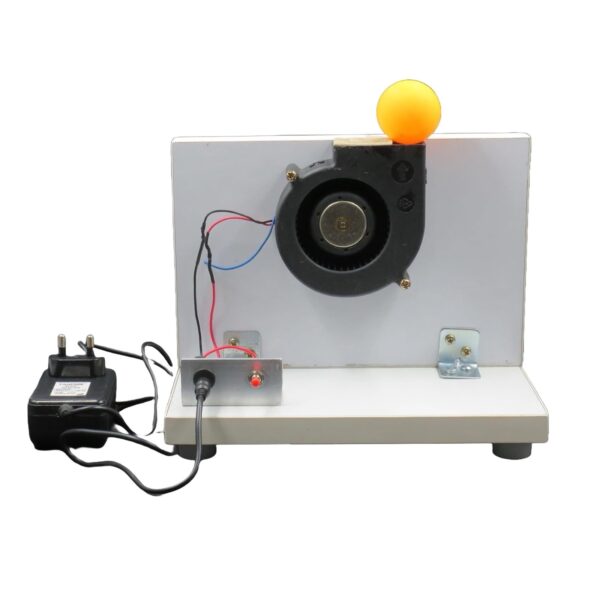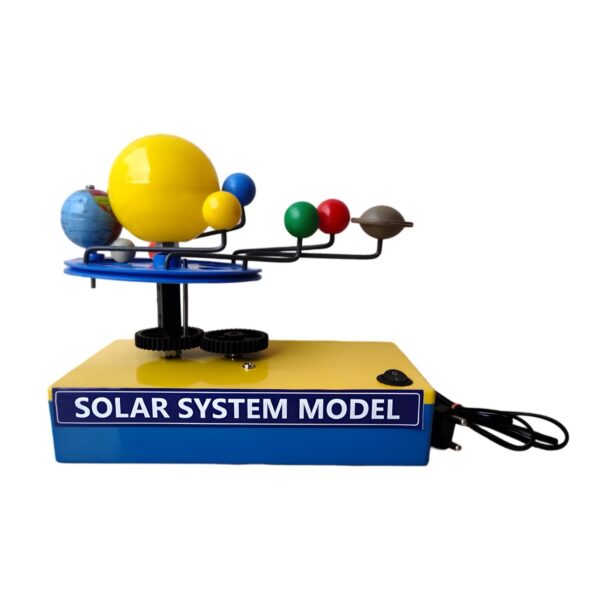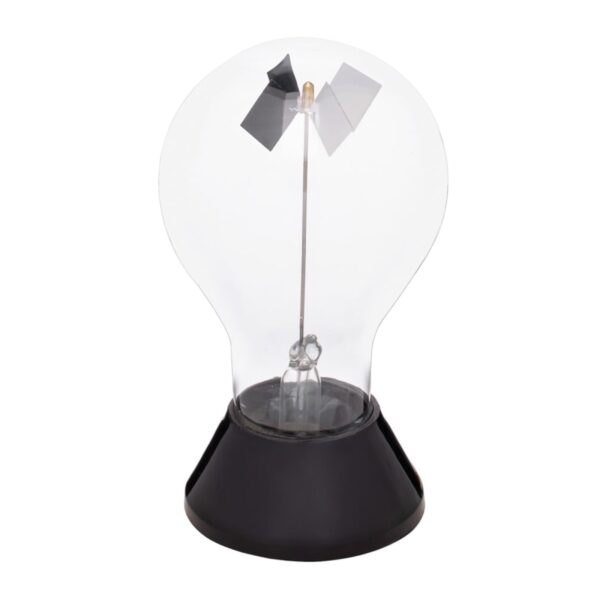- Pick up from the Samtech Store in Ambala
To pick up today
Free
- Courier delivery
Our courier will deliver to the specified address
4-5 Days
200+



₹500 Original price was: ₹500.₹300Current price is: ₹300. (Exc. GST)
To pick up today
Free
Our courier will deliver to the specified address
4-5 Days
200+
A Crookes Radiometer, also known as a “light mill,” is a device consisting of an array of vanes mounted on a spindle that can rotate when exposed to light. It was invented by the British scientist Sir William Crookes in 1873.
The radiometer consists of a glass bulb with a partial vacuum inside, within which a spindle is mounted. The spindle holds a set of four black and white vanes, which are attached to it and positioned at angles so they can rotate. The black side of each vane absorbs light, while the white side reflects it. When the bulb is exposed to light, particularly ultraviolet light or intense visible light, the vanes begin to spin.
At first, the rotation of the vanes puzzled scientists. A common theory was that the effect was caused by the pressure of light photons (radiation pressure), but the actual cause is somewhat more complex:
However, the presence of gas molecules in the bulb is key for this effect to happen. In an ideal vacuum, the radiometer wouldn’t spin as expected. Therefore, it suggests a balance between the light and the pressure exerted by gas molecules within the bulb.
The Crookes radiometer was an important early experiment in studying the interaction between light and matter. It contributed to the understanding of light’s energy and momentum, though it is now mostly considered a curiosity or demonstration of principles of radiation pressure and thermodynamics.
In stock
In stock
In stock
In stock
In stock
No account yet?
Create an Account
SAMTECH INSTRUMENTS
Typically replies within minutes
Any questions related to Crookes Radiometer?
🟢 Online | Privacy policy
WhatsApp us

